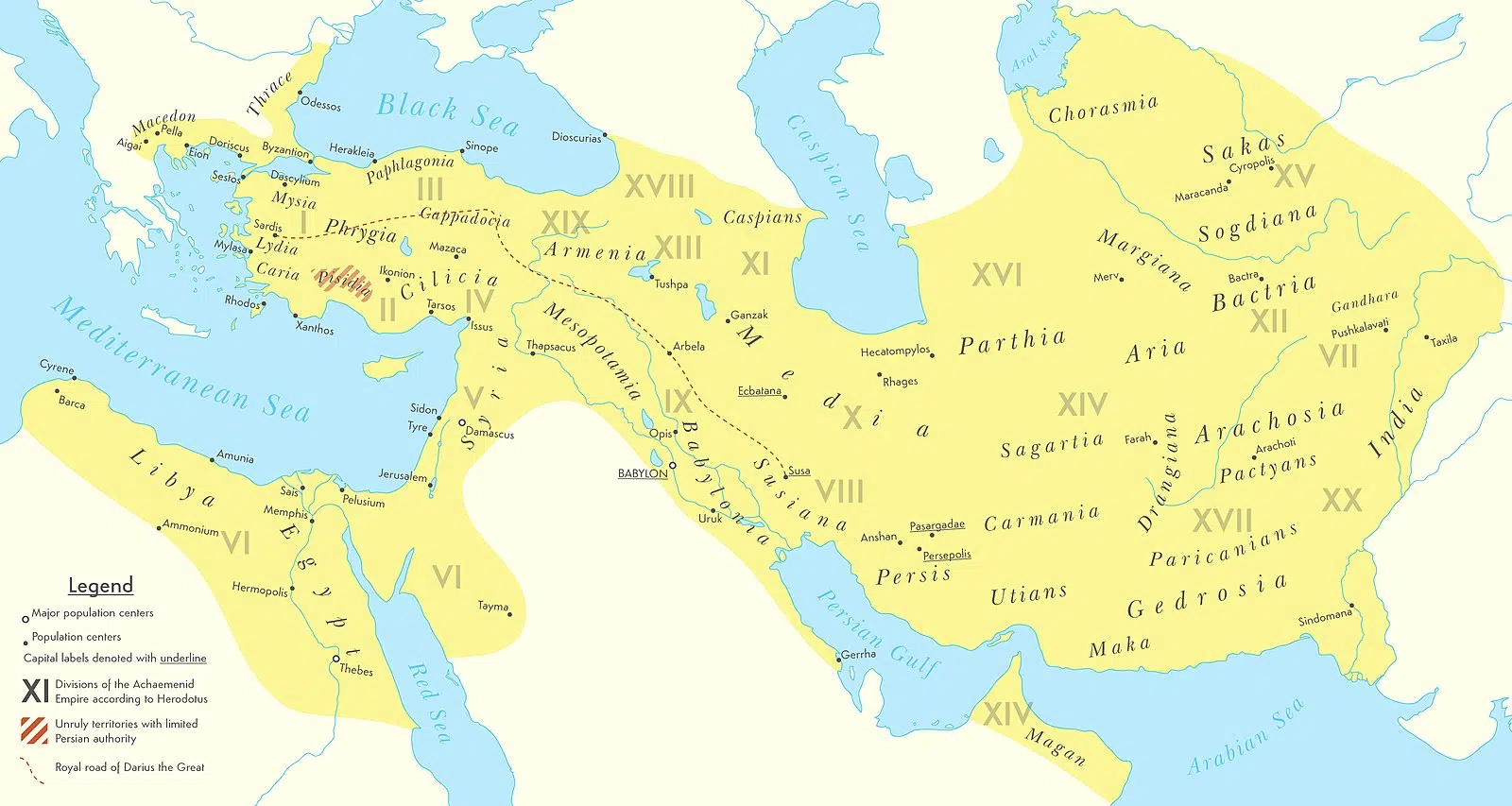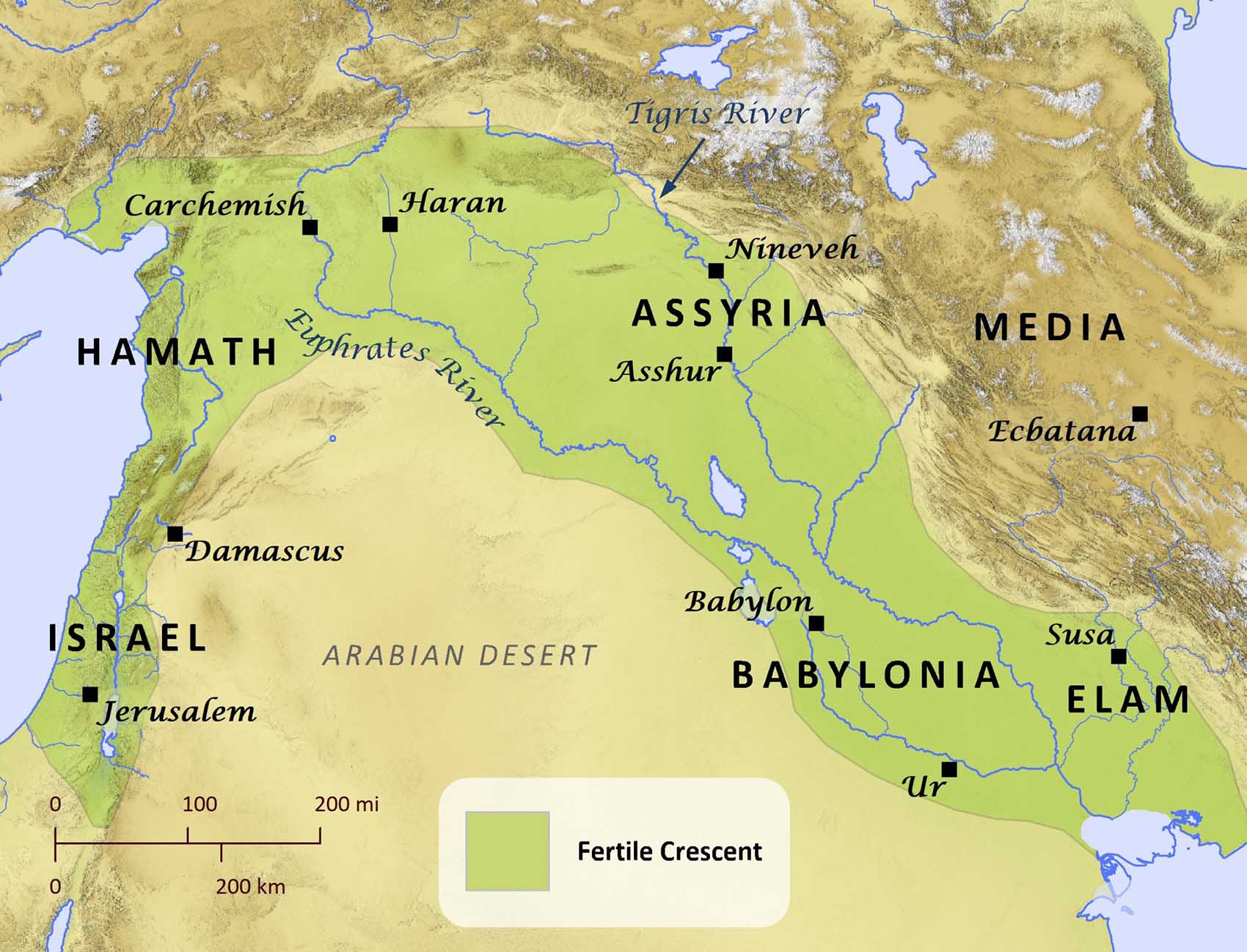The Vision of the Ram and the Goat Explained:
The ram represents the Medo-Persians, who will conquer the Babylonian Empire. The goat represents the Greeks, who will conquer the Medo-Persians. A great Greek king will lead this conquest, but will die, and four other less powerful kings will divide his kingdom.
Chapter 8 of Daniel covers his witnessing of another vision. In this vision, he saw a ram (Medo-Persia) with uneven horns attacking all the animals in his way. His violence was unstoppable until a goat (Greece) with a huge horn (Alexander the Great) appeared and shattered the ram’s horns, then trampled the ram until he died. The goat is proud, yet as soon as he has conquered the ram, his own horn breaks off, and four other horns grow from his head (Alexander’s generals). From one of these horns grows a boastful horn who makes war against God and His people (Antiochus Epiphanes).
Gabriel the angel is sent to explain the vision to Daniel. He began by telling him that the vision “pertains to the time of the end” and that he will tell Daniel “what will occur at the final period of the [horn’s] indignation, for it pertains to the appointed time of the end” (Daniel 7:17,18).
The ram, explains Gabriel, with two horns represents the kings of Media and Persia.
The shaggy goat represents the kingdom of Greece, and the large horn that is between his eyes is the first king.
Unlike other visions seen by Daniel (and Nebuchadnezzar), where the metaphors and images were not identified (Daniel 2, Daniel 7), here God explains precisely which nations are represented. He names them: first Media and Persia, two kingdoms that will work together to conquer Babylon, represented by the ram. Second, Greece, the shaggy goat, which will conquer the Medo-Persian Empire under the leadership of Alexander the Great, the large horn on the shaggy goat.
The ram is the Medo-Persian Empire. With the benefit of hindsight, it was also the empire represented by the two silver arms in Nebuchadnezzar’s dream in Daniel 2, a “kingdom inferior” to Babylon, as well as depicted as a ravenous bear in Daniel 7. The two silver arms represent the two nations (Media and Persia) that conquered Babylon in 539 B.C., slaying King Belshazzar (Daniel 5). While the first five chapters of Daniel occur during the Babylonian Empire, chapters 6, 9, and 10-12 are set during the Medo-Persian empire.
The Persian Empire would last for a little over two hundred years after conquering Babylon before Greece (the shaggy goat) toppled it, led by Alexander the Great (the large horn that is between the eyes of the shaggy goat).
In the vision, Daniel saw the shaggy goat “coming from the west over the surface of the whole earth” (Daniel 8:5), representing the Greek army’s march from west of Persia, conquering everything in its path. Persia is modern-day Iran (see map). Alexander conquered modern-day Turkey, Egypt, the Middle East, Mesopotamia, Persia, and parts of India.
In the vision, Alexander and his army, the shaggy goat, are depicted as advancing with astonishing speed. They are advancing without touching the ground, as though they were flying. In Daniel’s vision in Chapter 7, Greece is represented by a “leopard, which had on its back four wings of a bird” and four heads (Daniel 7:6). In both visions, Greece is traveling swiftly as though flying through the air, untethered to the ground and moving very quickly. This is because Alexander the Great’s impressive conquest was not only vast in scope, but done in incredible time.
It took Alexander roughly thirteen years to subjugate 2 million square miles of various kingdoms and nations. He never lost a battle. Part of his strategy involved quickly moving his army from city to city, demanding surrender or death. With “mighty wrath” he “struck the ram [the Medo-Persian Empire] and shattered his two horns (Media and Persia), and the ram had no strength to withstand him” (Daniel 8:6-7). The Greeks avenged themselves upon the Persians for invading Greece multiple times during the reigns of Darius the Great and his son Xerxes.
Alexander “magnified himself exceedingly,” (Daniel 8:8). He began to believe he was the son of Zeus, the supreme god in the Greek pantheon. But, just as God revealed to Daniel, “as soon as he [Alexander] was mighty,” he perished. The “large horn” on the goat’s head “was broken.” Alexander died at the age of 32 in the city of Babylon, possibly from typhoid fever, common in that region. It is said that as he lay dying, he was asked about his heir—to whom would rulership of his new empire go? “To the strongest,” replied the dying Alexander. Thus he died, now a broken horn.
His empire plunged into division and civil war immediately afterward, just as God foretold to Daniel: and the four horns that arose in its place represent four kingdoms which will arise from his nation, although not with his power. Alexander’s generals struggled to take hold of his empire in what is called the Wars of the Successors, ultimately ending with four men carving out four different regions for themselves to rule (the four horns). Ptolemy took Egypt, Antigonus took Asia-Minor (modern-day Turkey), Cassander was king of Macedon (Northern Greece), and Seleucus ruled in Babylon, Persia, and much of the Middle East. These were the four horns on the shaggy goat, four kingdoms which arose from Alexander’s nation, his empire. None of these four kingdoms or rulers had Alexander’s power. They were fractions of the geographic sprawl which Alexander had conquered.
In Nebuchadnezzar’s dream in Daniel 2, the bronze torso on the statue represents Greece. Daniel told Nebuchadnezzar that this empire would rule the earth. These Greek kingdoms that emerged from the ashes of Alexander’s wars stood strong for roughly 300 years in what is known as the Hellenistic period. Greek became a common language across these conquered nations and cultures, remaining so even after Rome ended the Hellenistic period, and its empire spread across the world. The Romans adopted Greek philosophy, culture, and even their gods. Greek was the most common language, the language of commerce, even into Jesus’ time, which is why the New Testament was written in Greek.
Biblical Text
20 The ram which you saw with the two horns represents the kings of Media and Persia. 21 The shaggy goat represents the kingdom of Greece, and the large horn that is between his eyes is the first king. 22 The broken horn and the four horns that arose in its place represent four kingdoms which will arise from his nation, although not with his power.
Check out our other commentaries:
-
Proverbs 7:11-21 meaning
The seduction of the adulteress is a master class in temptation, full of lies and clearing the way into sin. The young man yields....... -
Habakkuk 1:1 meaning
The prophet Habakkuk receives a revelation from God in a vision....... -
Jonah 2:6b-9 meaning
The LORD delivers Jonah from the sea when Jonah prayed to Him. Now Jonah gives a testimony of his deliverance and promises to pay the...... -
Ecclesiastes 11:1-5 meaning
God determines what will be and His work is beyond our ability to control or understand. Accepting reality, the best we can do is to...... -
Leviticus 1:10-13 meaning
The LORD gives Moses instructions for burnt offerings that are from the flock, sheep or goats.......




